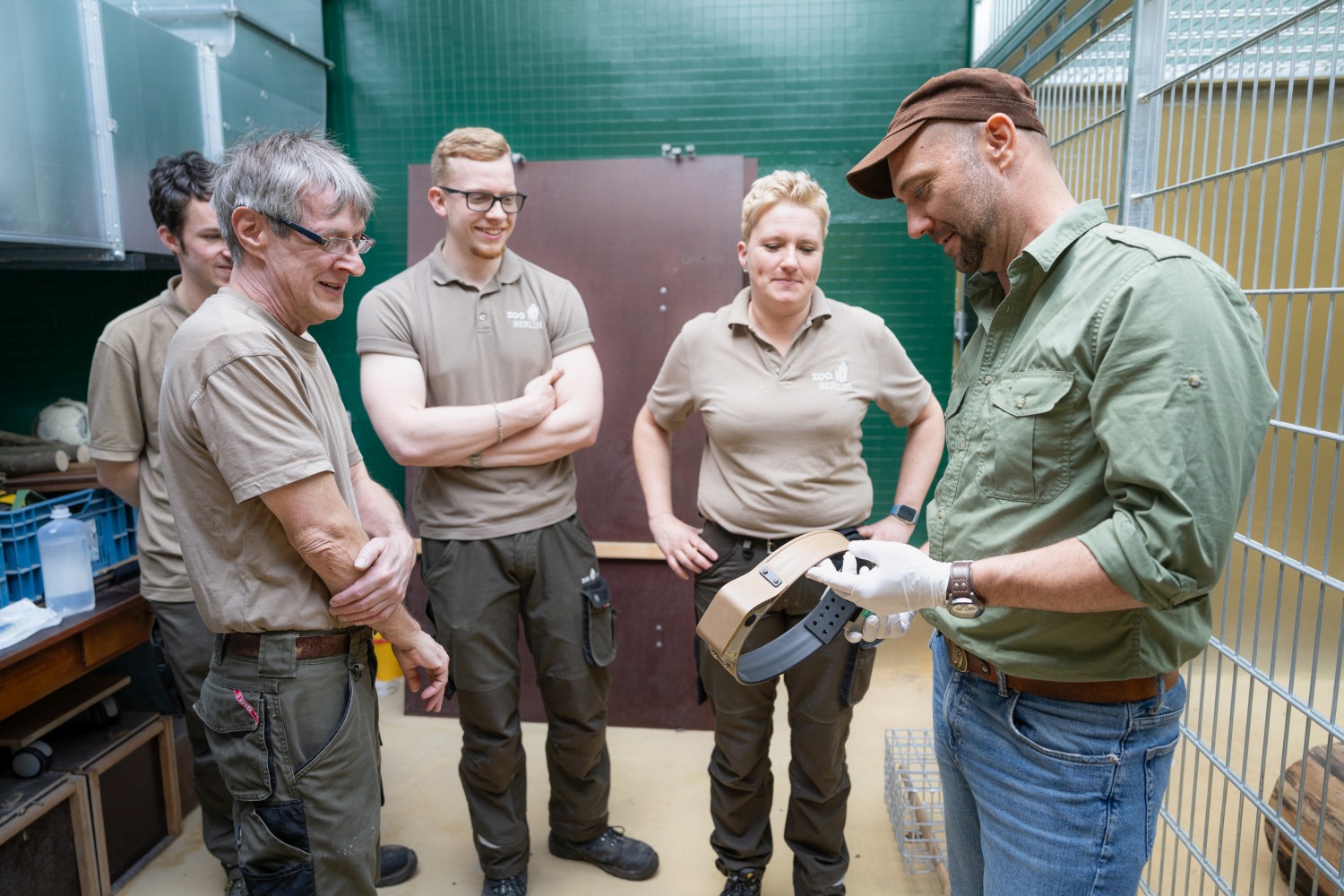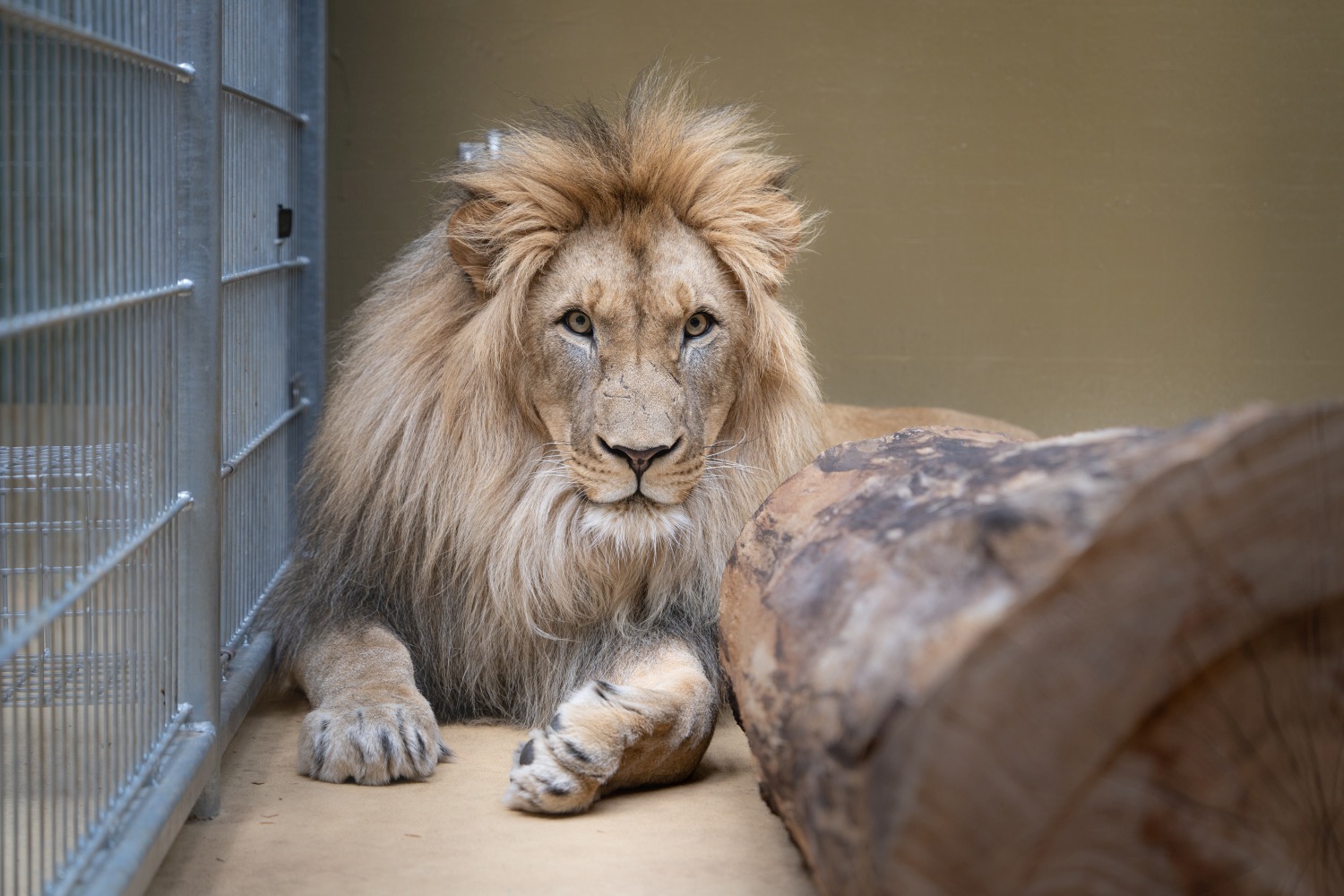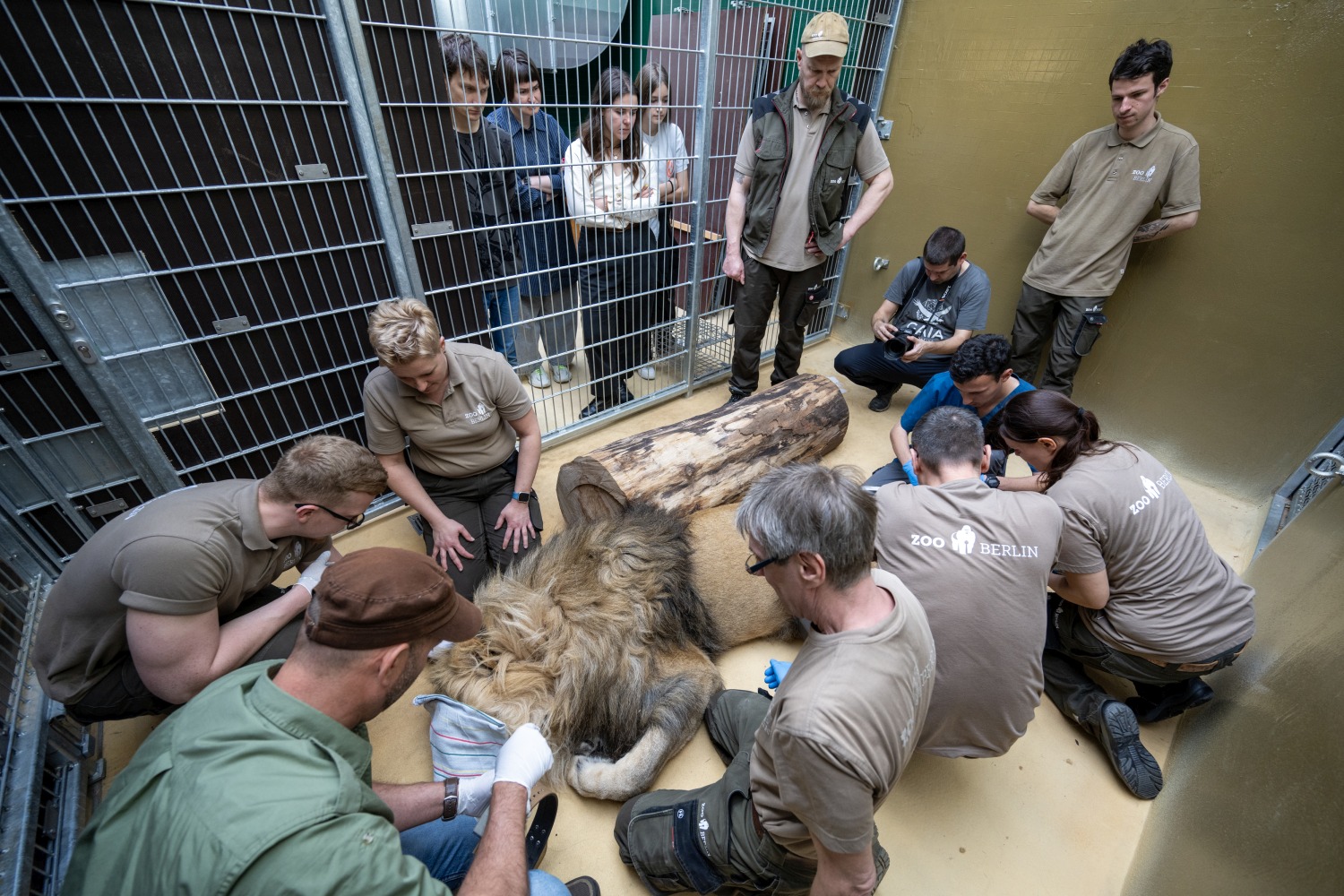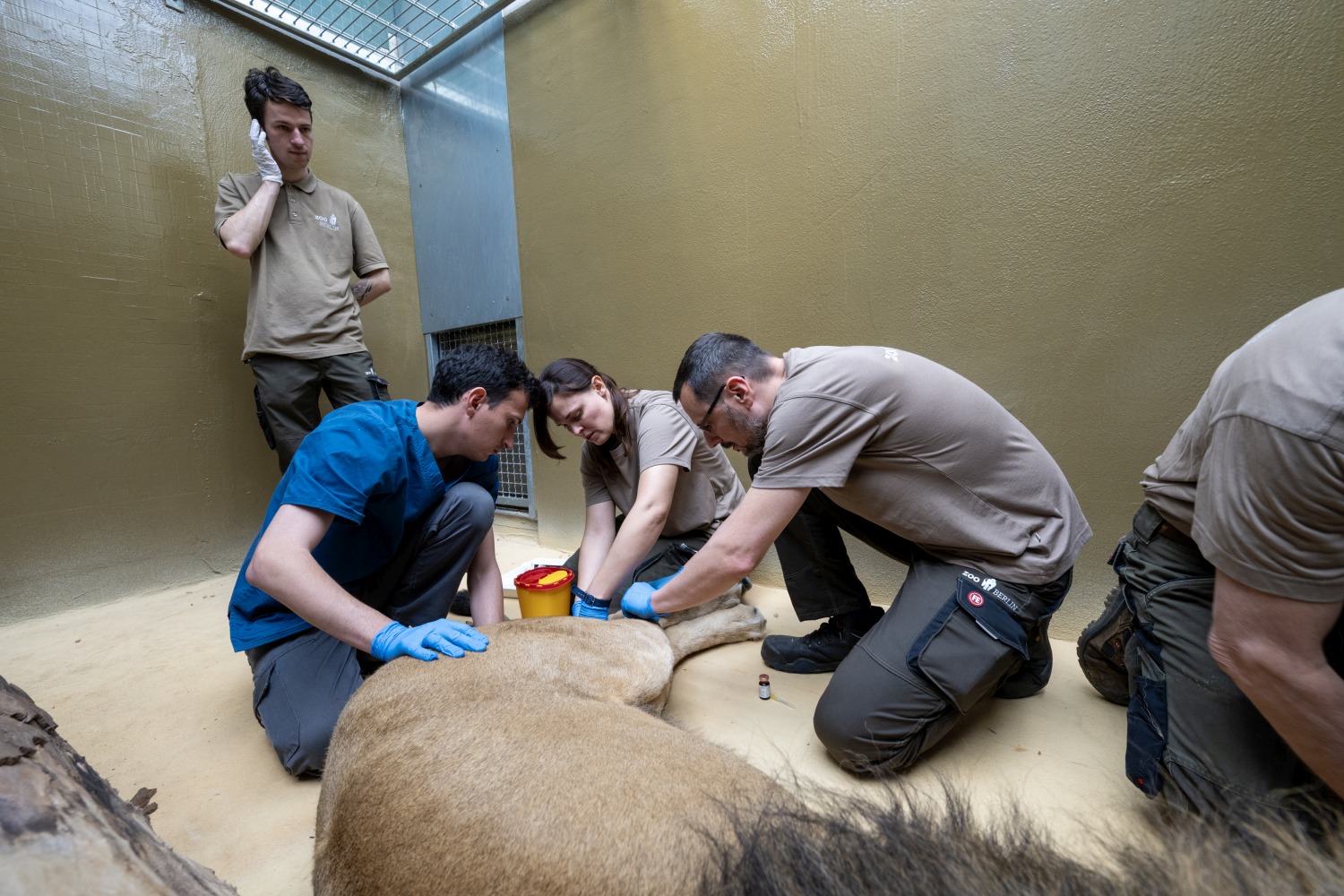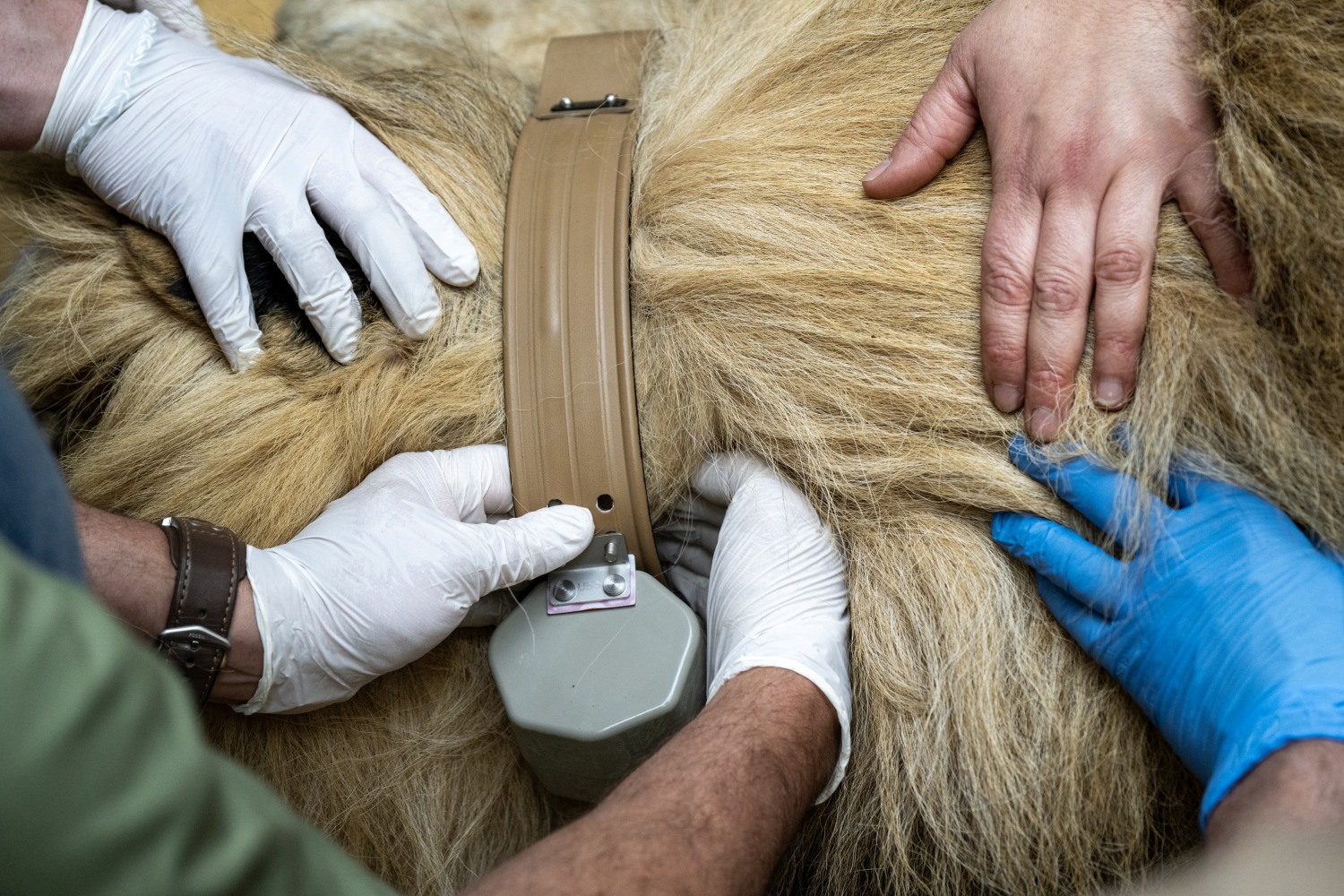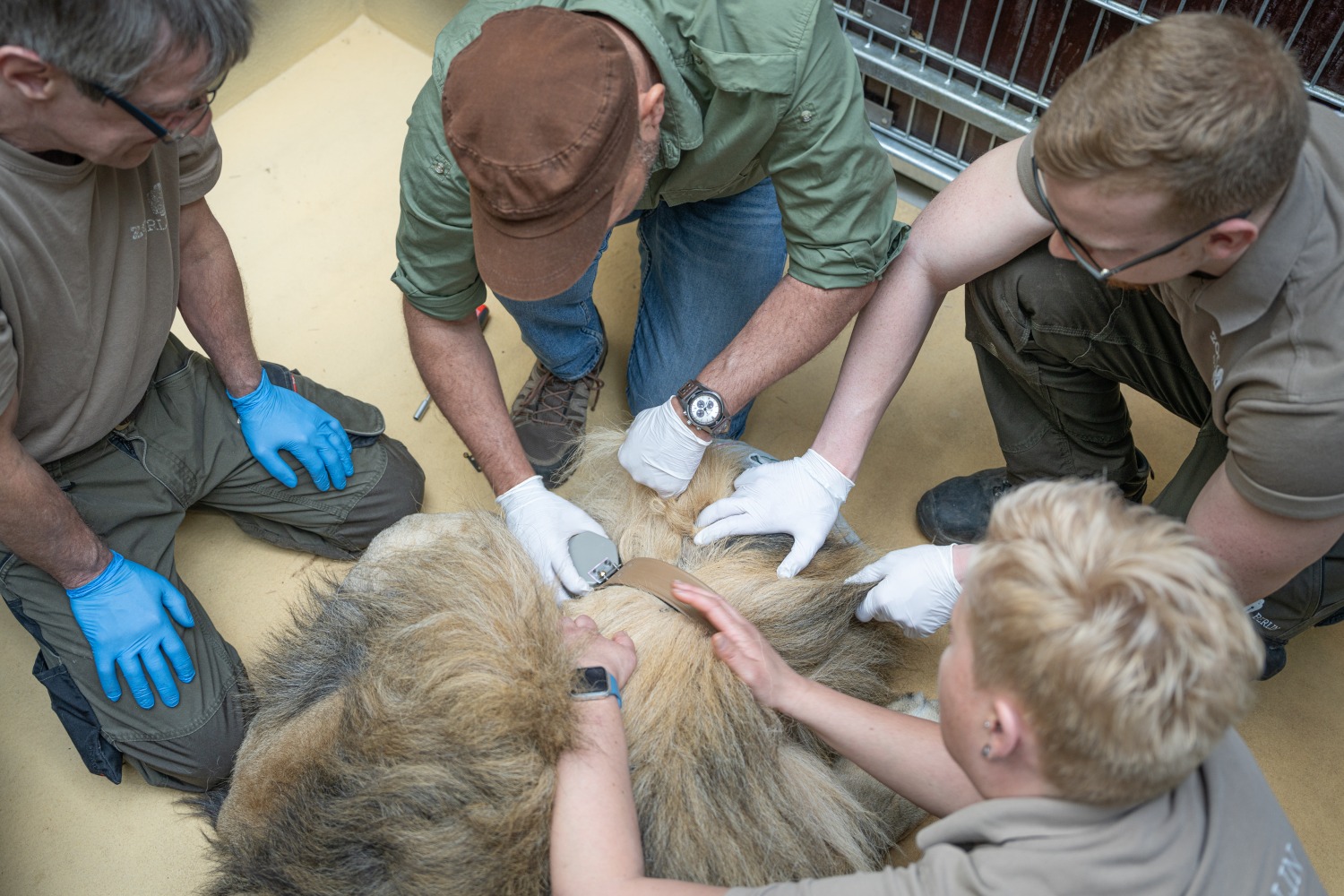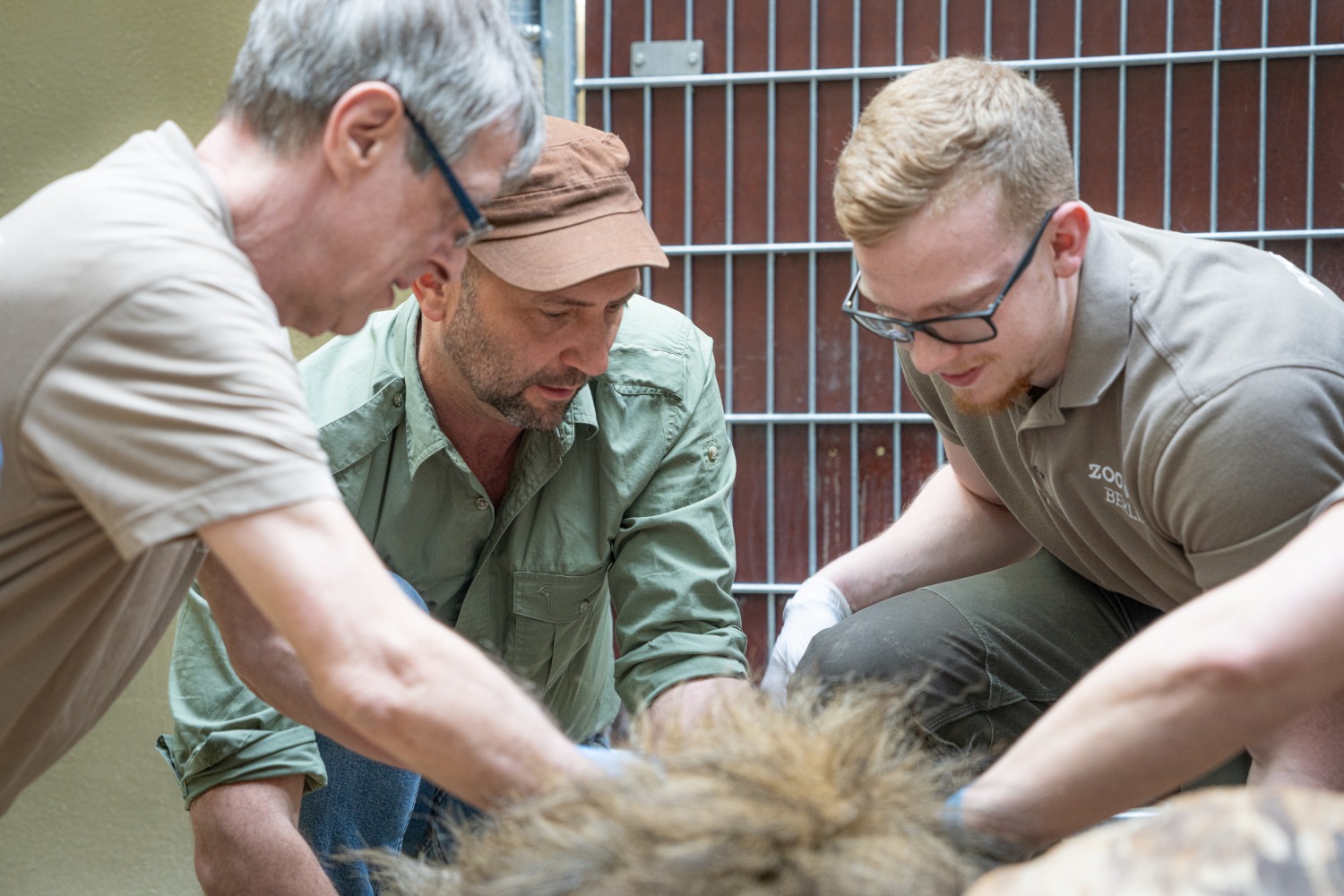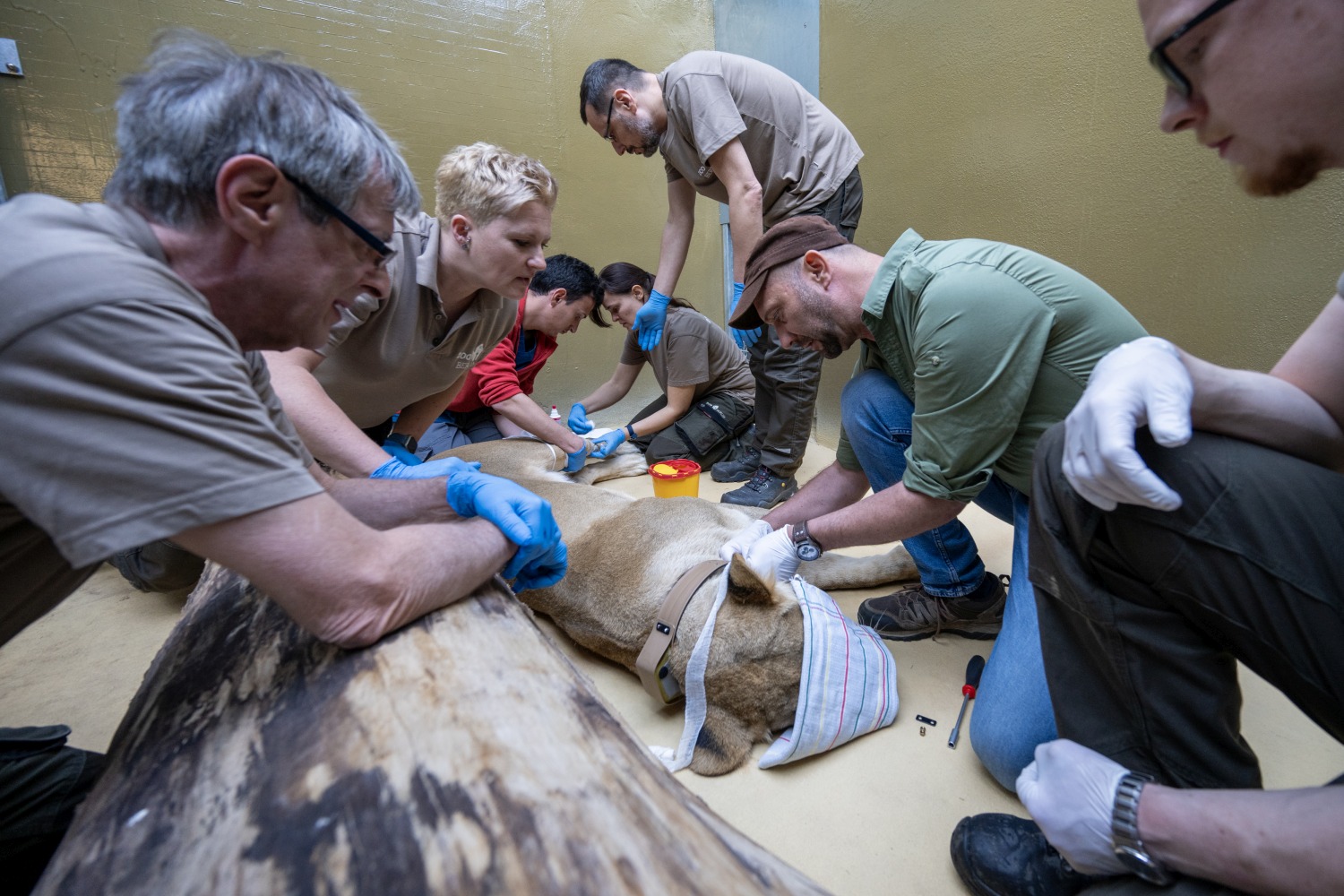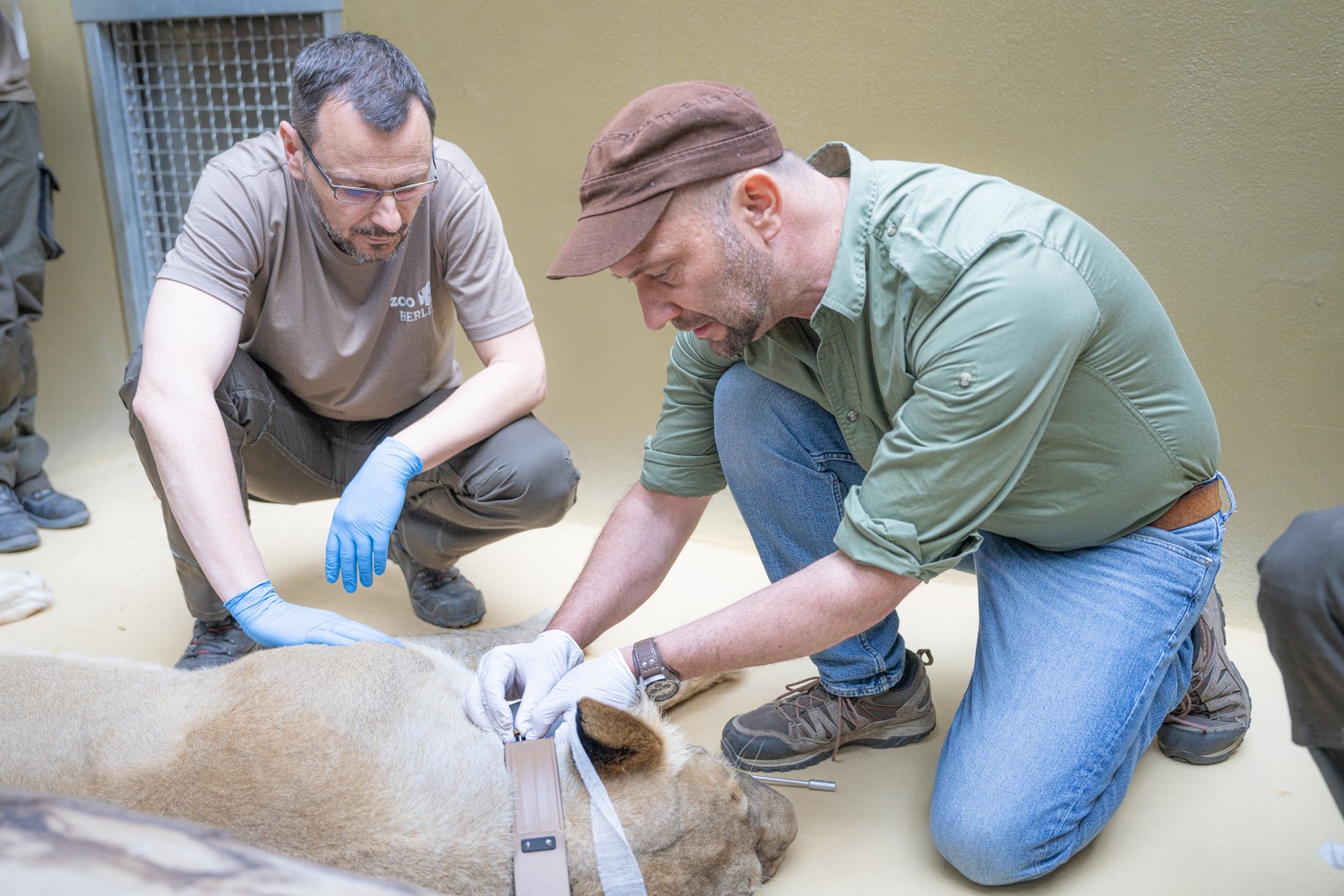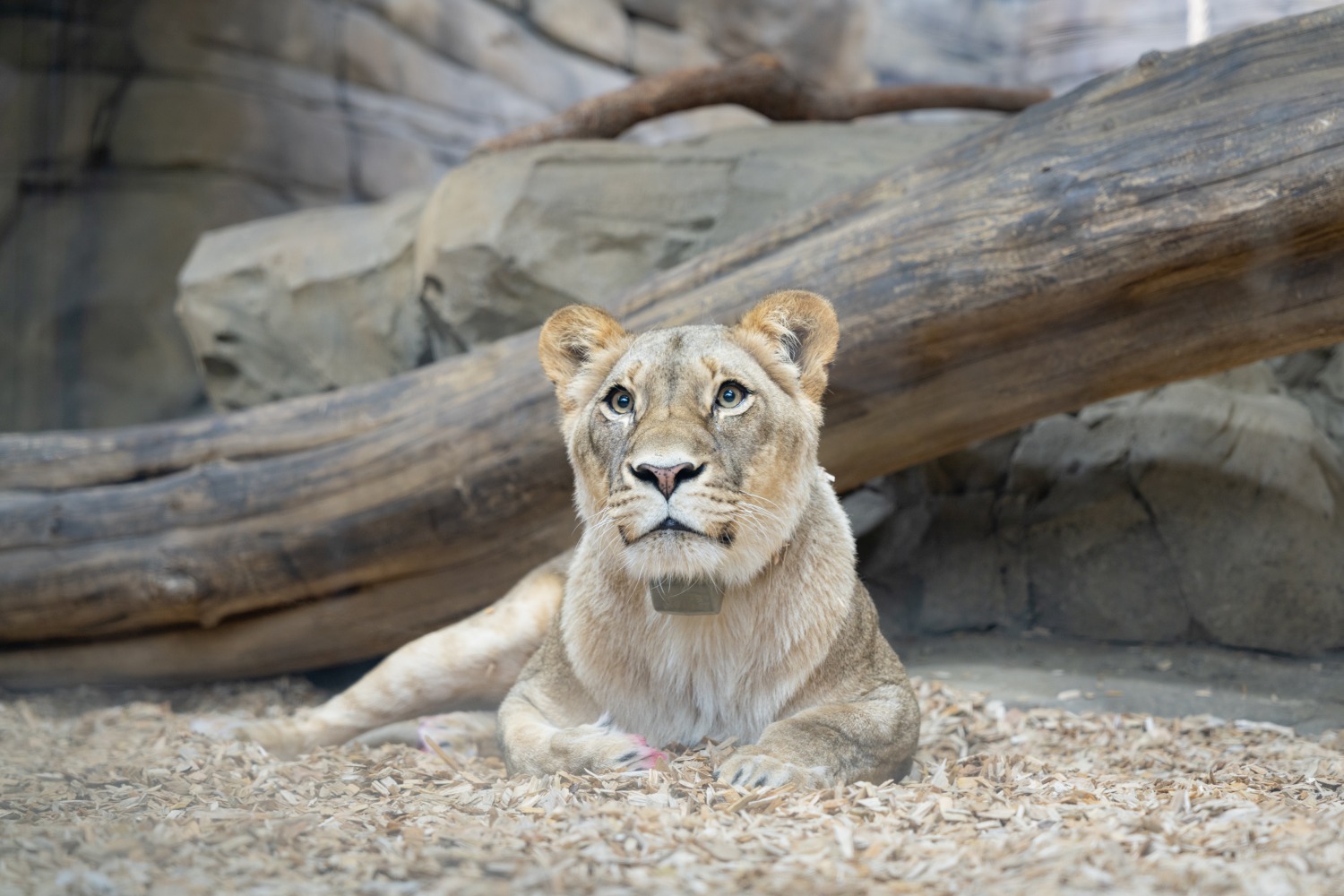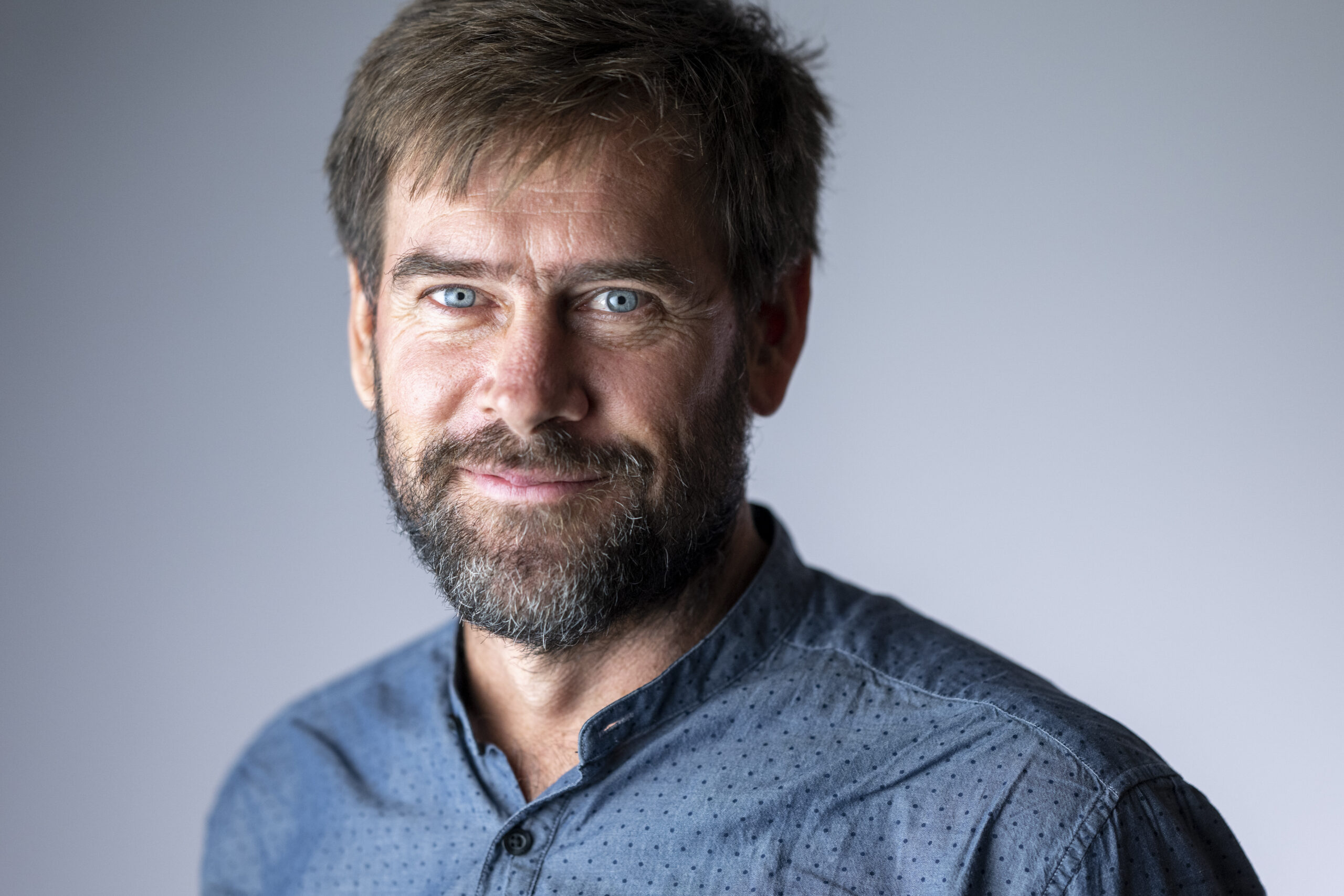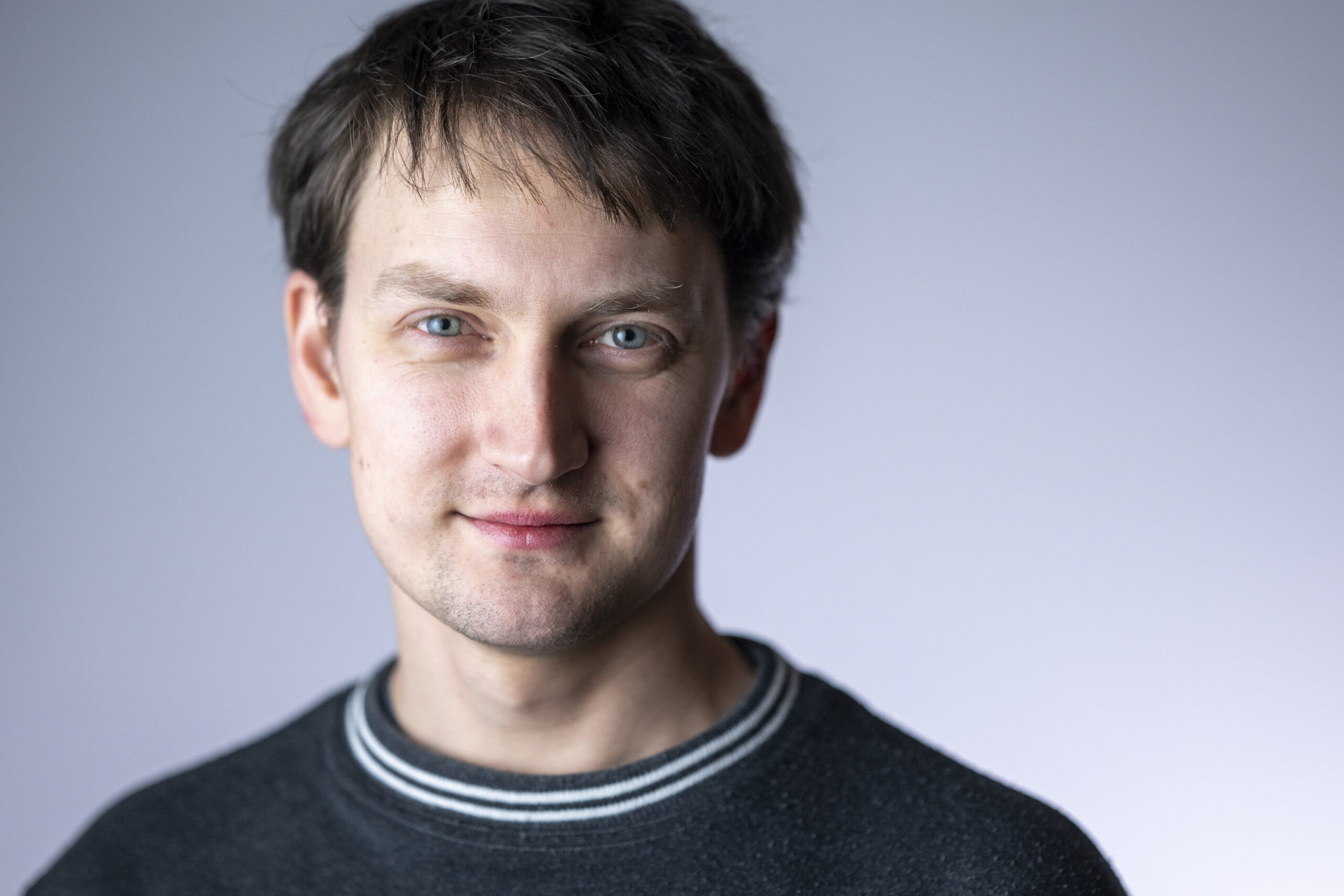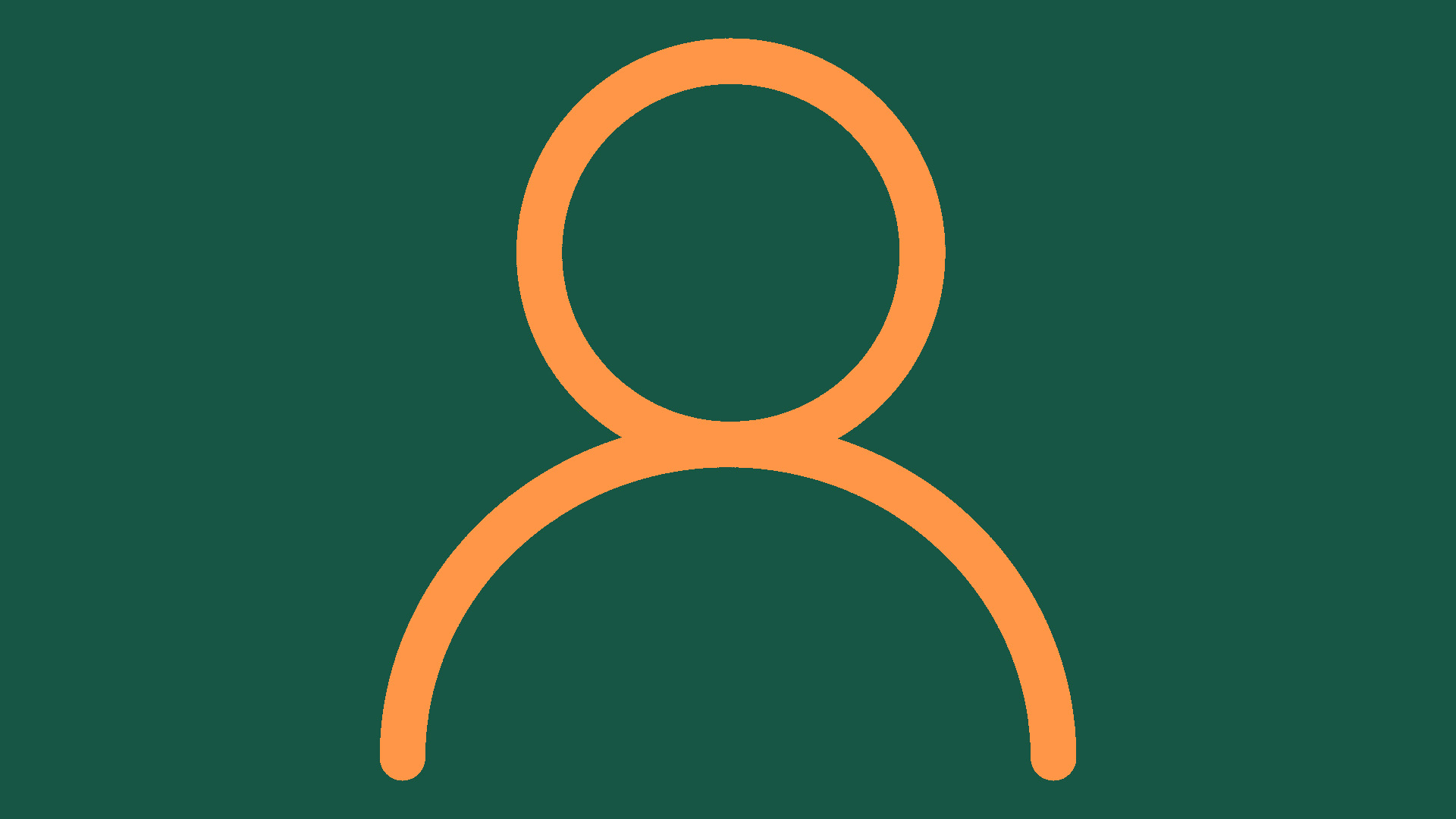An experienced team of veterinarians, biologists and keepers equipped the lions with collars from Berlin-based company Vectronic Aerospace as part of a health check at Zoo Berlin. The lions will wear the collars over a period of several weeks to continuously record movement data. The data collected is mainly “acceleration data”, similar to that of a smartphone, which records the animals’ movements in all three dimensions with millimetre precision. This data is combined with recordings from an installed camera to identify characteristic movement patterns that correspond to certain behaviours of the lions. This allows scientists to train an AI to recognise roaring, eating or grooming based on the sensor data alone. “With this project, we have the opportunity to make a really significant contribution to lion research and conservation”, explains Dr Andreas Pauly, Head of the Animal Welfare, Animal Health and Research Department at Zoo Berlin. “Our team is monitoring the animals closely and as soon as the data collection is complete, we will open the collars remotely.”
Conventional monitoring projects using collars focus primarily on recording the locations of the animals and their routes. “With our AI-based analysis tools, we go one step further and can not only evaluate where the animals are, but also understand what they are doing and why they are doing it”, explains Dr Jörg Melzheimer, biologist and one of the GAIA project heads. To do this, “pairs” are formed between confirmed animal behaviour from the video recordings and patterns in the acceleration data at exactly the same times. The artificial intelligence is then trained to be able to reconstruct these pairings independently from the acceleration data – in other words, to recognise behaviour solely from sensor data.
“The data from the lions at the zoo is essential for us and will take us all a big step forward, because the combination of data collection via collars and simultaneous continuous observation of the lions with cameras is not possible in the wild. We are grateful for this valuable collaboration with Zoo and Tierpark Berlin, with whom we have been close partners since the start of our project,” adds Melzheimer.
The GAIA initiative uses the method of AI-based behaviour recognition not only for lions, but has already developed similar methods for vultures together with Tierpark Berlin. These birds play a prominent role in ecosystem monitoring owing to their important ecological role as scavengers. For vultures, the scientists are going one step further and currently develop completely new animal tag with an on-board AI that runs independently of the data being transmitted. This means that important information for science and conservation can be generated in real time in the field and provided to conservation organisations or authorities. “Lions and vultures sometimes work together in the wild and observe each other to find food”, explains wildlife vet and GAIA project head Dr Ortwin Aschenborn. “We are therefore focussing our research on both the lions and the vultures in order to understand their interactions.” The GAIA initiative aims not only to utilise the animals’ knowledge for environmental monitoring, but also to gain valuable insights for the protection of lions and vultures.
Zoo and Tierpark Berlin have been working with scientists from the GAIA Initiative since 2022, providing support both in the lab and in the field. In doing so, they are making an important contribution to conservation. “Almost every child knows the impressive big cat. And yet the lion is massively endangered in some regions! There are only around 20,000 lions left on the entire African continent”, explains Zoo and Tierpark Director Dr Andreas Knieriem. “That’s why we need to break new ground and work together as experts in different fields. It gives me hope that artificial intelligence can not only generate fascinating texts or surprise us with amazingly realistic images, but also has the potential to revolutionise modern conservation.” Thanks to this collaborative project, a comprehensive overview of the lion population in Etosha National Park has already been established. For the first time in many years, precise information about the prides, their composition, their territories and their interactions with other prides and animals has been collected. This valuable information will help to protect these iconic animals in the National Park and support the work of local rangers and authorities.
